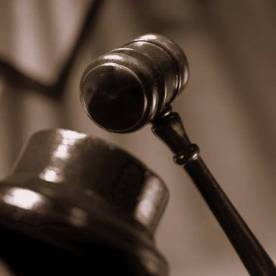 Avoiding the appeal of a final-rejection Office Action (OA) in the prosecution of a patent application by employing an effective strategy as part of an overarching IP strategy, structuring solid OA responses to cure deficiencies in the patent drafting or claim construction, and having a well-timed Examiner Interview is not always achievable. When timely filed, an Appeal of a Final Rejection to the Board of Patent Appeals and Interferences (BPAI) is possible.
Avoiding the appeal of a final-rejection Office Action (OA) in the prosecution of a patent application by employing an effective strategy as part of an overarching IP strategy, structuring solid OA responses to cure deficiencies in the patent drafting or claim construction, and having a well-timed Examiner Interview is not always achievable. When timely filed, an Appeal of a Final Rejection to the Board of Patent Appeals and Interferences (BPAI) is possible.
Under the America Invents Act (AIA), the BPAI was replaced with the Patent Trial and Appeal Board (PTAB), effective September 16, 2012. The Appeal must be filed while the patent application is still pending, before expiration of the designated time (including extensions) for filing an OA response. The appeal process is complex and can be costly – intellectual property firms specialize in handling such matters.
The PTAB includes the Under Secretary of Commerce for Intellectual Property and Director of the USPTO, the Deputy Under Secretary of Commerce for IP and Deputy Director of the USPTO, the Commissioner for Patents, and Administrative Patent Judges (APJs) who are typically former patent examiners. Appeals before the PTAB are generally heard by a three-judge panel selected from the APJs.
In preparing for an appeal, one should step back to consider the entire prosecution history that has transpired. Do you believe that the Examiner has made improper rejections? Has the Examiner persisted with such rejections (before a Final Rejection) without adding any new supporting arguments for the rejections? Do you think that the examiner’s understanding of the invention or interpretation of the cited art is incomplete, due to no fault of your own? Do you feel confident that all “loose ends” have been taken care during prosecution regarding claim amendments, treating the examiner’s comments, and citing supporting references to strengthen your arguments?
These are important questions to consider before filing an appeal. It is even preferable to consider them prior to receiving a final-rejection OA. If one feels that prosecution is not going well, and that the Examiner is not appraising the merits of the claims and invention adequately, it is best to start constructing a contingency plan in the event that you decide to appeal.
Such a plan means that you try to assess the prosecution file wrapper from the viewpoint of an appeal panel, looking for weaknesses in your arguments, unsupported claims regarding the cited art, and/or deficiencies in your current claim set. The main reason to start this process as early as possible is because you will not be able to add documents to the record, nor make amendments once the appeal process has been started.
Thus, this is an opportunity for you to “stuff the file wrapper” with as much supporting documentary evidence as possible. However, keep in mind that this can be a double-edged sword in that such information in the prosecution record can be adversely used against you at a later time in litigation (to substantiate claims of prosecution history estoppel, for example).
Prior to formally filing an Appeal, Applicants can opt for a Pre-Appeal Brief Conference, which offers applicants “an avenue to request that a panel of examiners formally review the legal and factual basis of the rejections in their application prior to the filing of an appeal brief…. The program is intended to spare applicants the added time and expense of preparing an appeal brief if a panel review determines an application is not in condition for appeal.”
Once the decision has been made to appeal, the appeal process begins once a Notice of Appeal has been filed. The Applicant (referred to in the Appeal as the Appellant) must then timely file an Appeal Brief. Besides meeting numerous USPTO requirements regarding format and content, the Appeal Brief points out the specific issues that are being appealed for judicial review, and the arguments asserted for each issue in the Appeal. In addition to arguments based on MPEP (Manual of Patent Examining Procedure) practice and citations of record, an Appeal Brief can further include reference to case law to support the assertions made in the Appeal Brief.
Besides the pre-appeal review process mentioned above, delays can arise from the issuance of Notices of Non-Compliant Appeal Brief, which can be issued repeatedly for various deficiencies. Thus, it is important to take measures to reduce or avoid such delays, which will also decrease potential patent-term extensions due to delays caused by the USPTO.
After the filing of the Appeal Brief, the Examiner then has a set period for filing an Answer. The Examiner’s Answer is expected to formally reply to all the assertions presented in the Appeal Brief. The Appellant is then given the last word before the PTAB, with the right to file a Reply Brief. An Oral Hearing may be requested by the Appellant as well. Only a small fraction of Appeals involve an Oral Hearing. Anecdotally, many practitioners believe that rulings in Appeals without an Oral Hearing are more favorable to Appellants.
The PTAB panel then reviews the material submitted as part of the Appeal, and issues a Decision, which may wholly or partially affirm or reverse the examiner’s rejections, or remand the application back to the Examiner for further consideration. The Decision must include specific findings of fact and conclusions of law for additional legal review in the event the Decision is further appealed. The PTAB panel will generally restrict a Decision to a review of the examiner’s rejections.
In rulings in which the Decision of the PTAB is adverse to the Appellant, an Appeal may be taken to the Court of Appeals for the Federal Circuit (CAFC), or a civil action may be filed against the Director in the United States District Court for the District of Columbia. The CAFC will review the USPTO prosecution record, and may affirm or reverse the action. In a civil action, the Appellant may further present testimony in court for the judge to review in issuing a new, overriding decision.
It is important to point out that Appeals to the CAFC which are raised on whether a proper combination of cited-art references, such as a motivation for a PHOSITA (person having ordinary skill in the art) to combine such references, was used in obviousness rejections are questions of fact (as opposed to questions of law). In such instances, a PTAB Decision is only overturned if the Decision lacks substantial evidentiary support. This often results in the CAFC affirming a Decision even when the PTAB panel might have ruled differently in a de novo review.
Thus, as noted on the Patently-O blog, instead of raising questions of fact, Appellants may fare better in higher-court Appeals by raising questions of obviousness, which require de novo review, while challenges to findings of fact would be better served in civil actions.
FlashPoint IP, a leader among intellectual property firms, factors these wide-ranging aspects into the process of securing patent protection, whether in performing a patent search and patent analysis of the prior art, engaging in patent drafting of applications, selecting how and where to file, or prosecuting your claims to an invention to help you maximize value in an extensive array of practice areas. Our patent attorneys are adept at synthesizing the many facets needed to create a winning formula for your IP. Contact us to discuss your options regarding IP strategy and positioning, and how best to secure your rights.

